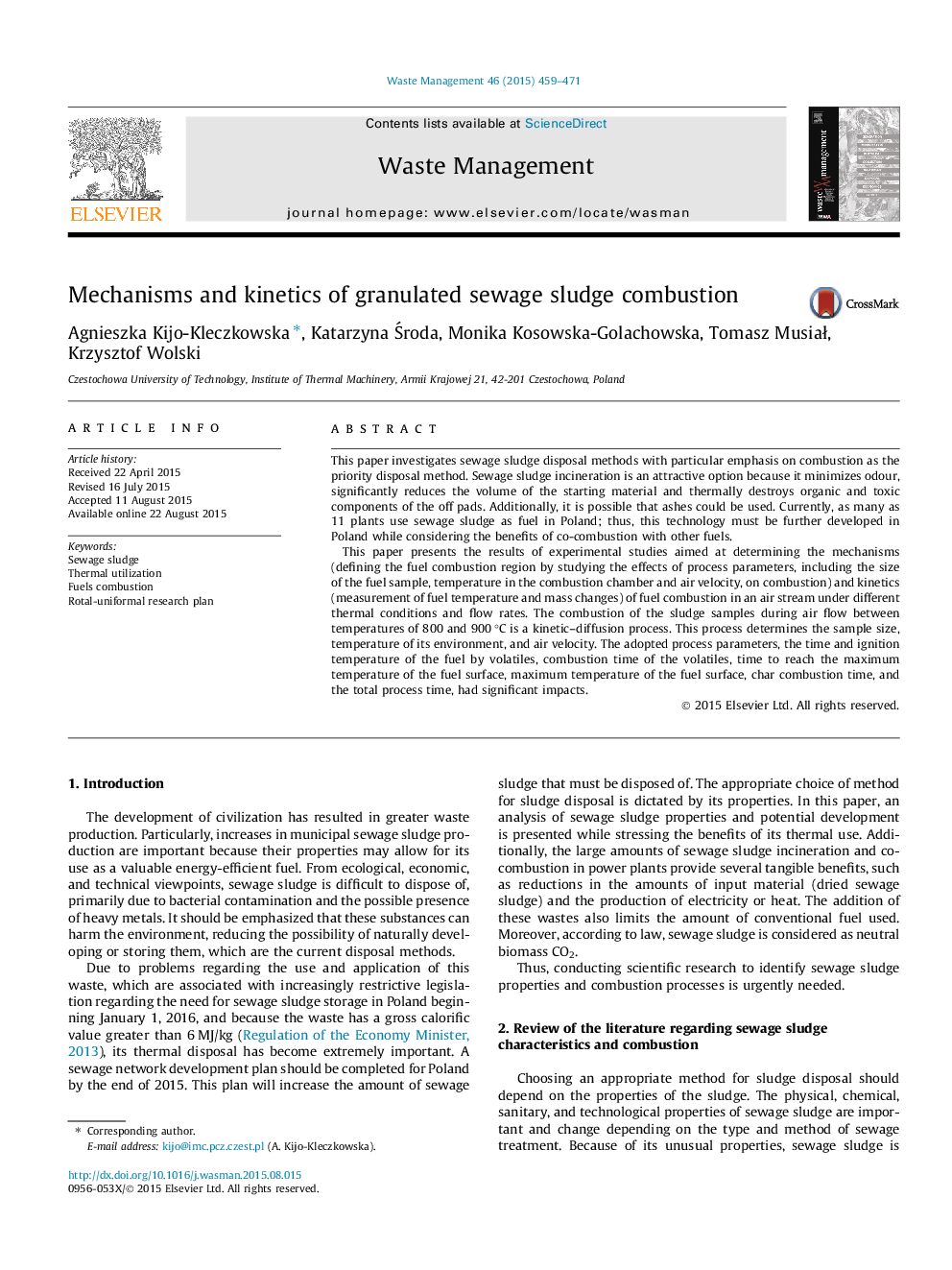| Article ID | Journal | Published Year | Pages | File Type |
|---|---|---|---|---|
| 6354523 | Waste Management | 2015 | 13 Pages |
Abstract
This paper presents the results of experimental studies aimed at determining the mechanisms (defining the fuel combustion region by studying the effects of process parameters, including the size of the fuel sample, temperature in the combustion chamber and air velocity, on combustion) and kinetics (measurement of fuel temperature and mass changes) of fuel combustion in an air stream under different thermal conditions and flow rates. The combustion of the sludge samples during air flow between temperatures of 800 and 900 °C is a kinetic-diffusion process. This process determines the sample size, temperature of its environment, and air velocity. The adopted process parameters, the time and ignition temperature of the fuel by volatiles, combustion time of the volatiles, time to reach the maximum temperature of the fuel surface, maximum temperature of the fuel surface, char combustion time, and the total process time, had significant impacts.
Keywords
Related Topics
Physical Sciences and Engineering
Earth and Planetary Sciences
Geotechnical Engineering and Engineering Geology
Authors
Agnieszka Kijo-Kleczkowska, Katarzyna Åroda, Monika Kosowska-Golachowska, Tomasz MusiaÅ, Krzysztof Wolski,
